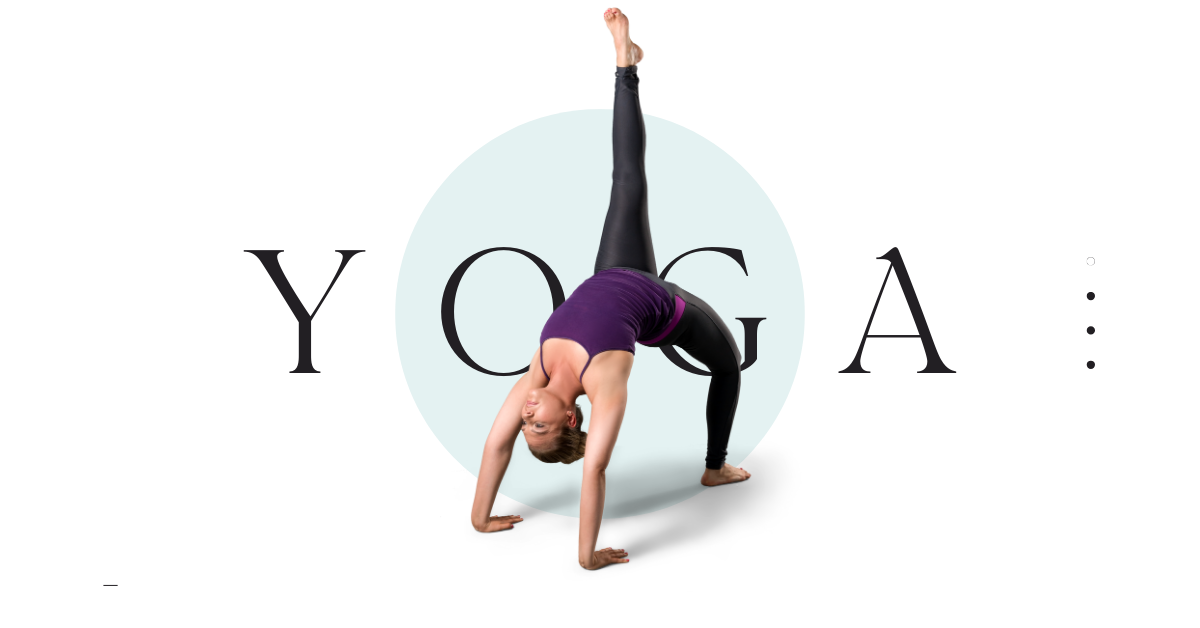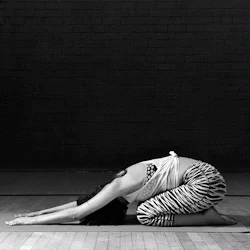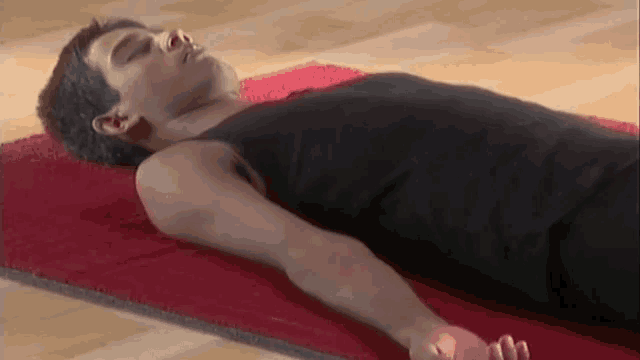Introduction:
Yoga is a spiritual school practiced in India for over five thousand years. Today, yoga is considered one of the components of modern Western culture. It was original and had a single doctrine, meaning, and system. It was physical and spiritual.
It has become popular worldwide. Yoga is relevant in the modern world. It is so in the conditions of rapid civilization. It brings together the body, spirit, and mind.
Asana are physical postures. Pranayama is prana control. And dhyana is meditation. They let us treat a person in a thorough way. Although the teaching of yoga is ancient, its principles remain relevant today. Yoga relieves stress, increases flexibility and strength, and restores balance in the body.
Many research papers have been written about the health benefits of yoga. The ancient teachings have gained even more meaning in today’s stressful world of stress and difficulties.
Recently, there has been an unprecedented surge in interest in the science of yoga. Experienced yoga practitioners want to learn more about the ancient art of yoga.
They want to continue practicing it as it was intended. Simultaneously, the interest in medical science and biological sciences is growing. Yoga has grown worldwide.
We need to measure and prove its health benefits. There are many stories of how yoga has led to physical and emotional health changes. Still, recent research has shown the actual physical and mental effects. These effects have attracted psychologists, neurologists, and physical therapists.
Therefore, the purpose of this blog is to introduce the topic of how yoga affects a person’s life on many levels. However, we want to consider this question not only at the physical level but also at the spiritual level. We want to combine ancient Indian yogic texts with modern science.
We will show how a person can benefit from yoga. So, both experienced yoga practitioners and people starting this path may be interested in this blog.
What is Yoga Unlocking Inner Serenity: Transform Your Life with Yoga
The Foundations of Yoga:
History of Yoga:
In conclusion, it is already clear that spirulina’s history in yoga is deep and long. It spans thousands of generations. It involves a full study of human spirituality and health. The history of yoga, the history of mutual cultural development.
Yoga originated from the Indian subcontinent in ancient times. It has exported to and benefited from many other cultures. It has also benefited from religions and philosophies.
Modern yoga began in ancient India. Though the titles were different, they were necessary. “yoga” originates from the Sanskrit root yuj, which means yoke or unite. Harper says, “Yoga links the individual with universal consciousness.”
Image Credit-hiddenmantra.com
Pre-classical yoga
Arose in India from 500 BCE to 200 CE. Ancient scholars composed the Upanishads between 800 and 400 BCE. They contain the basic ideas of the Upanishads in an older and larger form.
The Bhagavad Gita is the most known part. It scales the idea of yoga across three paths: karma, bhakti, and jnana-yoga.
Classical yoga began in the second century. emphasizes “Yoga Sutras” as described by Patanjali. These 196 sutras are often seen as the first organized presentation of yoga. In them, Patanjali teaches a method to the goal of yoga, called samadhi.
Post-Classical Yoga
Many centuries after Patanjali, his followers designed a yoga system. It focused on renewing the body to preserve life.
This was unlike previous practices. They did require breaking the limits of physical consciousness. At the start of the post-classical period, a new kind of yoga was born—Tantra Yoga. It blends a moderate approach to physical influence and spiritual connection.
These create the needed background to achieve wisdom and enlightenment.
The Modern Era
In the modern era, yoga reached the Western continent only in the late 19th and the 20th centuries. Several key people have influenced the spread.
One of them was Swami Vivekananda. He introduced basic yoga concepts at the 1893 Parliament of Religions in Chicago. After him, several more Indian teachers played a vital role.
They spread their styles by creating various practitioners. Among the most important people were T. Krishnamacharya. His students included K. Pattabhi Jois, B.K.S. Iyengar, and Indra Devi. The post-classical era offered over a hundred variations.
They were of various types of practice. On the surface, they seem similar. But, they have crucial differences in practice. Moreover, the era of fun activities has interested all civilized societies. Hence, the practice has spread.
Today, yoga has many styles. Some are intense and include hard poses. For these, you can pick Ashtanga and Vinyasa-style. Others are meditative and therapeutic, such as Yin and Restorative Yoga.
All these types have one core and stay goal – to become a nice connection of your body and mind aiming spirit. The practice course shows this. It shows the possibility of staying flexible and changing as needed. Modern yoga continues to harmonize human development and correlate with contemporary science.
The Philosophy Behind Yoga:
The creators of the yoga texts aim to develop a life plan based on their deep philosophy. The main idea of yoga, and other depictions, is the pursuit of the unity of the self and the world.
This pursuit promotes physical health, mental health, emotional strength, and spiritual knowledge. It would be good to identify the Eight Limbs of Yoga.
They are a basic idea in philosophy. One can describe them as the main framework. The teaching of holistic understanding principles can explain this construct.
Eight limbs include:
Yama: Moral Restraints
Niyama: Observances
Asana: Physical Postures
Pranayama: Breath Control
Pratyahara: Withdrawal of the Senses
Dharana: Focus
Dhyana: Meditative Absorption
Samadhi: Bliss or Enlightenment.
Yoga Philosophy Feature: The first two limbs included five parts. They were Yama and Niyama. It shows a person’s morals and behavior when with others. One must be attentive to the object. The Yamas contain ahimsa. It is the intention to avoid harming.
Satya is the idea of truthfulness. Asteya is non-stealing. Brahmacharya is celibacy. And Aparigraha is non-possession. Cleanliness, sobriety, pressure on God, reflection, and surety to the Divinity are niyamas. The team decides the vital component as a whole.
The asanas are physical. Pranayama is an act of life power. And pratyahara is the removal of filthy things using a sham. Dahrana is formulating. Dhyana is an uninterrupted flow of consciousness to get this item. In a flowchart, Shiva prays for its parts to brainstorm.
If an object names it a bane and, what’s more, the name kills the person who treats it. In a state chart, the scheme somehow makes sense. But, making it taller leaves longing, even though faults of self-assertion solidified.
The Science of Yoga:
The Physical Mechanisms:
Yoga combines postures, breath control, and sometimes meditation. It can affect the body’s systems in many ways. Thus, yoga helps the muscles and lungs. It also helps the heart. The following achieves that.
Physiological factors: Muscular and skeletal systems.
Yoga postures, called asanas, make the body stronger. They do this by making you position your body in ways that strengthen various muscle groups. Isometric exercise strengthens muscles. It’s a type of exercise. In it, a muscle tightens without changing length or joint angle.
Improves Flexibility: The practice of yoga entails stretching and elongating muscles. During this process, the muscle stretches slowly and safely. This increases the range of motion.
Yoga has many parts. It involves postures, breath control, and meditation. Yoga greatly impacts the body’s physical systems. Yoga has helped the muscles and bones.
It has also helped breathing and the heart. It did this through a series of body mechanisms.
Impact on the Muscular and Skeletal System:
Strengthens Muscles:
Yoga postures (asanas) require you to hold your body in positions. These positions build strength in different muscle groups. This strengthening comes from isometric exercise. In it, the muscle tension increases without visibly changing its length. The joint angle stays the same.
Improves Flexibility:
Regular yoga practice stretches and elongates the muscles, increasing flexibility. This slow stretching increases the motion range in the joints. It reduces the risk of injuries.
Enhances Posture:
By strengthening and stretching muscles, yoga helps improve alignment and posture. As core strength develops, the back and abdominal muscles better support the spine. This improves posture.
Prevents Cartilage and Joint Breakdown:
Moving joints fully with yoga can prevent arthritis. It stops it from degenerating. Yoga also does this by dripping fresh nutrients into cartilage. These areas tend to be used but restricted, like the uncovered parts of the hips.
Protects the Spine:Twisting and bending in the postures protect the spine. They let spinal fluid move via the spinal discs.
Impact on Respiratory and Cardiovascular Health:
Improves breathing:Yoga contains pranayama. It teaches controlled breath. It may improve lung capacity by making the respiratory system more efficient.
Blood pressure decreases:Past research found that yoga can also lower blood pressure. This is true for people with hypertension.
Regulates Heart Rate:Yoga may help one relax and reduce stress, lowering the heart rate.
Increases Circulation: Yoga does this through physical activity. For example, when the corpse stance ends. The stillness lets more food into the cell. This is because removing dead cells and growing new cells need good blood flow.
Enhances Cardiovascular Endurance: Cardiovascular endurance can also enjoy particular kinds of yoga. For example, Ashtanga, Vinyasa, and Power Yoga require fast activity. They use many centers to make motion.
An increase in heart rate is the result, but it does build the heart if it remains at low levels.
In other words, the mental actions of yoga are key. They need analysis to understand yoga. It’s a better force for mental well-being and thinking.
The Nervous System and Yoga: Stress Reduction and Relaxation: Stress Reduction and Relaxation Activating the Parasympathetic Nervous System.
Relaxation approaches include meditation, focused breathing, and repairing poses. They stimulate the parasympathetic nervous system.
They help the body start the “relaxation response.” This reduces excessive stress. It is also called the “relaxation” or “calm” maneuver.
Reduction in Cortisol Levels: Excessive stress raises blood cortisol levels. This hides the “attachment or take-to-flight” hormone. Practicing yoga has links to reducing excessive cortisol levels. This lowers stress.
Enhanced GABA Activity: GABA is the #1 brain transmitter for calm. It becomes more active during yoga.
Improved Heart Rate Variability (HRV): Heart Rate Variability Yoga critically impacts man’s heart rate variability. High HRV means the body can bend and shield the nervous system switch well. Cpane-heartednicating HRV is joined at the hip with stress detention and mental vitality.
Mindfulness and Present-Moment Awareness:Mindfulness and Mind-Body Connection Mindfulness is a yogic idea founded on present-moment engagement.
Psychotherapists think the present second is a pointer to yogin expertise. It’s the here and now. It helps reduce stress and build perseverance.
For example, Concentration skyrockets under narrowed thesis. Pranayama and dharana techniques put human attention and focus in overdrive.
The Biochemical Effects: The biochemical effects of yoga are not limited by the body’s physical or mental planes. They extend to hormonal levels, inflammation state, and immune performance. These biochemical effects give us insights. They show how yoga can help us stay healthy.
Hormonal changes resulting from practicing yoga include: Stress Hormone Regulation: Hormones regulate stress levels.
They do this by reducing cortisol and related stress hormones. This happens when doing regular asanas and pranayama. These activities fight anxiety and stress and build relaxation and fun in the body.
The endocrine system keeps balance. It’s due to yoga poses and inversions. They stimulate the thyroid and parathyroid gland. These poses are also meditative.
Other passive postures comfort and hormone the balance of the four.
Good mood and well-being create the endorphin system. It has amino acids that block anxiety and depression and promote a happy attitude.
Balanced reproductive hormones play a key role. They are part of a well-regulated system that brings comfort. Yoga and meditation are relaxing.
They help regulate hormones by boosting estrogen and testosterone. They comfort libido, female menstrual presentation, fitness, and fertility.
Better sleep quality comes from yoga practices. They promote relaxation with gentle stretches and meditation. It will promote better sleep patterns and aids in hormonal balance.
The Role of Yoga in Inflammation and Immunity
Reduction of Chronic Inflammation:
Inflammation and immunity activate the HPA axis. They also digest a substance that promotes inflammation. The body’s CRP and PRO-intermittent systems make the substance.
Immune Boosts:
It protects body repairer immune systems. This means less anxiety and a healthy immune system. Regular yoga improves certain aspects of the immune system. These parts include the natural killers and T cells.
Lymphatic Flow:
Stretching postures that turn help the body’s toxin removal. They boost lymphatic blood flow and help it work better. They also interact with the film and remove bad cells well.
Regulation of Oxidative Stress:
Reduction oxidation occurs when the body lacks antioxidants. This leaves the body unprotected from some harmful substances. The lack of antioxidants allows these substances to cause oxidation in the body.
Toxins flood into the body’s underpinnings. They overwhelm a unit of organized blood cells. The process leads to inflammation and cell damage. Clean your systole system with real yoga. It’s a therapy for stress. Breathe and reduce oxidation.
Boost your immune system:
Reduce your feelings and make your immunity strong and active. Stress-free feelings and thoughts will make your immune system act like this.
Yoga processes chemicals in series. The flow retains and improves these factored hormone sciences. Its comfort hormone apartment is for your immunity and general health.
The Spirituality of Yoga:
The Concept of Mindfulness in Yoga:
Present-Moment Awareness: During asana or other parts of yoga, practitioners focus on their breath or body. This means someone places the mat. They then take it off the mat, even outside the yoga room.
Integration of Body and Mind: Yoga achieves body-mind integration. It does this by knowing that thoughts and emotions are woven with physical feelings. Mindful yoga practices make one attentive to the body’s signals, creating self-awareness.
Achieving Balance and Inner Peace through Meditation and Pranayama: Meditation is essential for peace and well-being. It brings mental clarity and spiritual growth.
This technique aims at sitting . It aims at allowing thoughts and emotions to stop with no attachment. This method of transcending the oscillation aids peace and stillness.
Pranayama (Breathing control) explores energy flow. It does this at a basic level. Pranayama techniques consist of Ujjayi breath and alternate nostril breathing. They also include Pranayama Diaphragmatic breathing to calm the body and mind.
Yoga and Energy:
Understanding Prana Prana and Pranayama:
Prana and Pranayama: Prana is the life energy force in the universe and handles all living beings. Prana is the energy that unites the body, mind, soul, and spirit. Breath and Life energy, or new sama, is Pranic flow.
Chakras and Yoga: The chakras ignite along the spine from the buttocks to the head. The rituals calm the endocrine system. In yoga, the grouping of chakras is asana. Asana is for postures that excite and liberate energies via these practices.
Integrating Yoga into Daily Life:
Simple Yoga Poses and Practices for Beginners: Mountain Pose (Tadasana): Stand . Put your feet hip-wide apart and your arms at your sides with palms facing out.
Use your leg muscles, elevate your head, and take a low breath. This basic position would enjoy straightening your back. It will teach you the basics of your weight.
Downward Facing Dog (Adho Mukha Svanasana):. Begin on your hands and feet, then elevate your hips to establish an inverted V position.
Extend your whole upper heal down and elevate your extended spine. This Asana would help stretch your body. It would also release anxiety and bring joy to your mind.
Child’s Pose (Balasana): Kneel on your heels and hip your hips toward them. Then, wrap your hand or rest them on your side. The Asanas allow you to extend your spine and hip and twitch softly.
Corpse Pose (Savasana): Lay backward with your arms at your side and your hand facing up. Close your eyes and unlock your body while perceiving the mat around you. This pose will aid you in relaxing, digesting your work, and feeling your inner peace.
Tips for Consistency and Deepening Your Practice:
Set Realistic Goals:
Start with a few tiny objectives that you can do . If you devote a few minutes to yoga every day, you could find you do yoga sessions lasting longer and too deep.
Create a Sacred Space:
Designate a dedicated, clean place in your home for practicing yoga. When lit with inspiring items like candles or incense, it can put you in the right frame of mind. A place where you will want to practice .
Establish a Routine: Plan to practice yoga at distinct times during your day. It should be energizing in the morning or relaxing at night after a long day. The thing is, do whatever you want.
Movement enjoyment: Approach yoga with compassion and interest – it’s an adventure, not a location. How do you feel when doing yoga? Don’t worry if your posture isn’t perfect or if you’re not doing what anyone else is doing. Doing it is preferable.
Explore Different Styles and Teachers: Attempt to take any other lessons and styles of yoga to discover what you enjoy. Every class and yoga style has benefits. They encourage you to stay energized while keeping your edge.
Cultivate Mindfulness Off the Mat: Take these philosophies and lessons into the present field. This suggests that you should think about what you say, imagine, and try. You should also think about why you are living. You should live a satisfying, kind, and thankful life.
You should also do yoga sessions and mindfulness postures. You should do these each day to deepen your yoga practice. As you watch develop, the advantages of yoga will emerge in lessons and the world as a whole. It is a journey, and every element will make you feel better.










2 thoughts on “How Yoga Works – Benefits and Techniques | Yoga Journal”